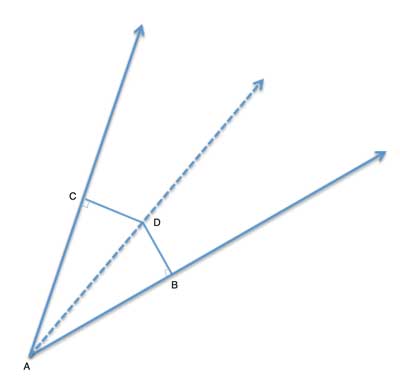
You are able to exchange the hypothesis and conclusion of a conditional statement to produce a converse of the statement, and you can test to see if the converse of a true conditional statement is true.

You know conditional statements could be true or false. In this lesson you have learned to identify and explain conditional statements and create your own conditional statements. Of course you can, like a 30−60−90 triangle, which is definitely not equilateral.

An ingenious problem-solving solution for befuddled math. Can you create a triangle with one interior angle measuring 60° but with the other angles having different measures? Corollaries to Base Angle Theorem and Converse: A triangle is equilateral IFF it is equiangular. Let's check the converse statement, 3, to see if it is true. You have enough information to change statement 4 into a conditional statement. Statement 4 is not a conditional statement, but it is true. Statement 3 is a converse of statement 2. Statements 1, 2, and 5 are all true conditional statements (If … then). If △NAP is equilateral, then it is also isosceles. If interior ∠N is 60°, then △NAP is equilateral.Įquilateral triangles have equal interior angles. If △NAP is equilateral, then interior ∠N is 60°. If △NAP is equilateral, then its interior angles are all equal. Decide which ones are conditional, which are not conditional, and which conditional statements are true: We can set up conditional statements about it. If two points lie in a plane, then the line joining them lies in that plane.īelow we have equilateral triangle △NAP. If two parallel lines are cut by a transversal, then the corresponding angles are congruent. Some postulates are even written as conditional statements: If angles are adjacent, then they share a common side. If angles share a common side, then they are adjacent. (Converse)Īdjacent angles share a common side. If two lines never meet, then they are parallel. If two lines are parallel, then they are lines that never meet. Many times in geometry we see postulates and theorems that seem like they could become conditional statements and converse conditional statements: We know it is untrue because plenty of quadrilaterals exist that are not squares. If a polygon is a quadrilateral, then it is also a square. If a polygon is a square, then it is also a quadrilateral. It might create a true statement, or it could create nonsense:

The converse of a true conditional statement does not automatically produce another true statement. If triangles have equal corresponding sides, then they are congruent. If my dog observes something that excites him, then he barks. You take the conclusion and make it the beginning, and take the hypothesis and make it the end: You can switch the hypothesis and conclusion of a conditional statement. If the triangle is isosceles, then only two of its sides are equal in length.Įxchanging parts of conditional statements You can set up your own conditional statements. You will see conditional statements in geometry all the time. If my dog barks, then my dog observed something that excited him. Creating Conditional Statements (If, Then)


 0 kommentar(er)
0 kommentar(er)
